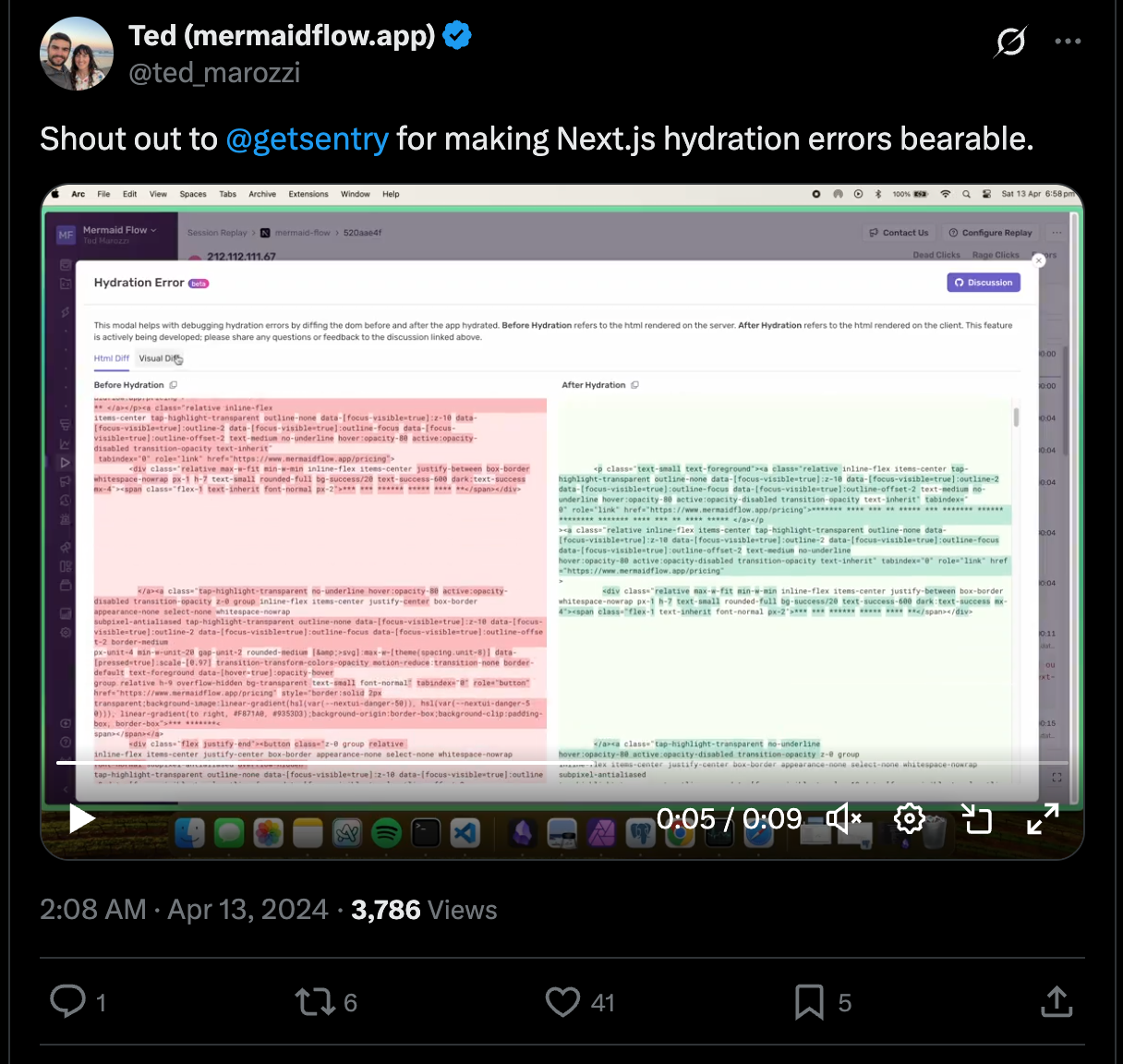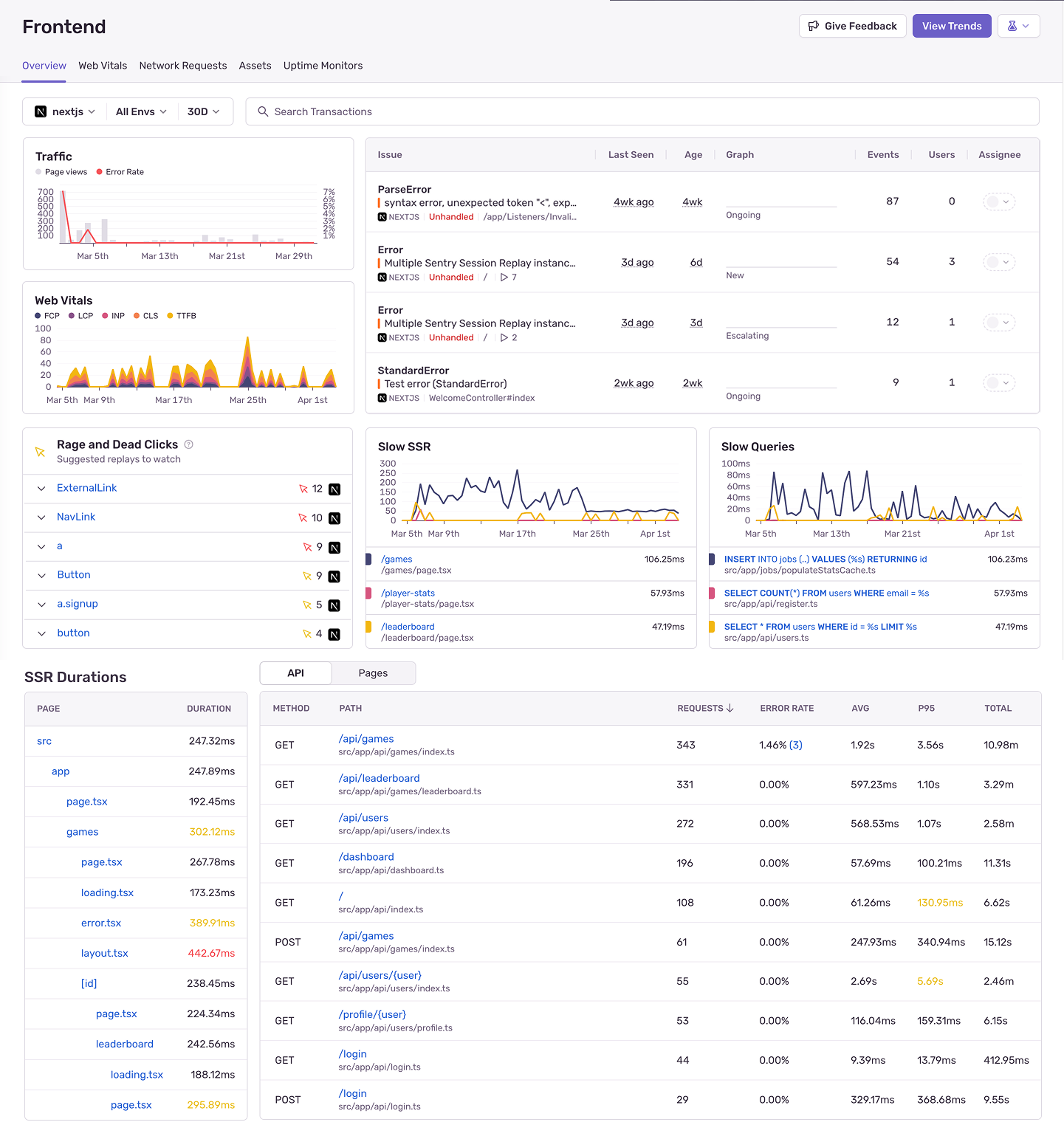Vercel is adding a new marketplace category and Sentry is in(to) it
Vercel is adding a new marketplace category and Sentry is in(to) it
More people will build and ship applications in the next year than in the 10 years previous. As more applications make their way into “launched”, by developers of all experience levels, making sense of “what broke”, “why”, and clear paths to fixing it is going to become more and more important.
This is why it made sense for Sentry to be one of the first platforms launching Vercel’s new Observability Marketplace category.
Sentry wants everyone who’s building software to feel like they can ship safely, without being forced to debug it by wading through lines of metrics or having to artisanally hand-craft special dashboard views to figure out what’s going wrong.
Bringing Sentry closer to the places Builders build
With the speed that software is being built, that code is absolutely going to break, and having Sentry easily available via Vercel is going to make sure developers have the fastest path to fixing broken code quickly.
We’re continuing to invest in the ecosystems developers build with the most, and to drive the best developer experience possible, so that those teams can focus on what matters most - shipping software. A big part of this developer experience is making sure the most important platforms developers use, like Next.js, have the most friction free experience possible.
Developers can get started using Sentry in Next.js with a 1-line command which configures client, server, and edge settings, configures source maps for code, and implements error boundaries.
npx @sentry/wizard@latest -i nextjs
This makes sure Next.js applications are configured with Error Monitoring, Replays, and Tracing on the first setup command, making it fast for teams to debug everything from application slow downs, to complex hydration errors, and RSC problems.
But we’re not done! We’re working on a new Next.js specific insight dashboard to give Next.js builders a framework specific view into monitoring their environments.
Our framework specific insight pages are designed to give builders who have invested in specific frameworks insights that closely line up with the information the value most from their observability platforms.
We make a lot of jokes at the legacy monitoring tools. They often force people into dashboards to try and make sense of overly complex data, so a Next.js dashboard might seem like a step back for us. Hear us out. We care A LOT about making sure that developers and operations teams are getting the maximum context from the different areas of Sentry.
Next.js applications have unique combinations of technologies - frontend and backend, RSCs, SSR - building a view that specifically addresses these combinations is a great way to make sure developers and operations teams get to keep that context across their entire application.
Sentry Native Integration in the Vercel Marketplace
Sentry Native Integration in the Vercel Marketplace
Starting today, developers can sign up for Sentry and have centralized billing and account management from within their Vercel account.
Developers can use this integration to create and attach Sentry projects to Vercel projects, synchronize Sentry configurations, and use Single Sign-On to access Sentry and view Issues, Replays, Traces, and all the Sentry observability goodness that builders love.
The Vercel Native integration is a great way to enable developers to ship their applications, and make sure they are managed, and monitored from day 1.
Visit our docs to learn more or as always you can share your feedback on GitHub or jump into the discussion on Discord.







